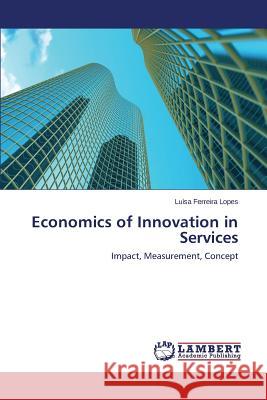Economics of Innovation in Services » książka
Economics of Innovation in Services
ISBN-13: 9783659696565 / Angielski / Miękka / 2015 / 232 str.
Despite the increased interest in innovation in service sectors in the last 10 years, our knowledge about it still lags significantly behind what we know about innovation in manufacturing sectors. Although services account for more than 65% of GDP in the more developed countries, conceptual and operational difficulties resulting from the immaterial nature of services justify this state of affairs. Moreover, services have been seen, for a long time, as innovation laggards, even after innovation was no longer restricted to the outputs of R&D activities. This work aims at shedding some light on this important phenomenon. Three complementary perspectives are taken: first, innovation's impact on performance is estimated, using CIS (Community Innovation Survey) data; second, an alternative measurement methodology is proposed to deal with the identified issues in existing methods; finally, the concept of innovation is revisited incorporating information obtained during extensive interviews with a large number of CEOs in the IT Services sector. This volume will be particularly useful to both researchers and students interested in better understand innovation in services.
Despite the increased interest in innovation in service sectors in the last 10 years, our knowledge about it still lags significantly behind what we know about innovation in manufacturing sectors. Although services account for more than 65% of GDP in the more developed countries, conceptual and operational difficulties resulting from the immaterial nature of services justify this state of affairs. Moreover, services have been seen, for a long time, as innovation laggards, even after innovation was no longer restricted to the outputs of R&D activities. This work aims at shedding some light on this important phenomenon. Three complementary perspectives are taken: first, innovations impact on performance is estimated, using CIS (Community Innovation Survey) data; second, an alternative measurement methodology is proposed to deal with the identified issues in existing methods; finally, the concept of innovation is revisited incorporating information obtained during extensive interviews with a large number of CEOs in the IT Services sector. This volume will be particularly useful to both researchers and students interested in better understand innovation in services.











